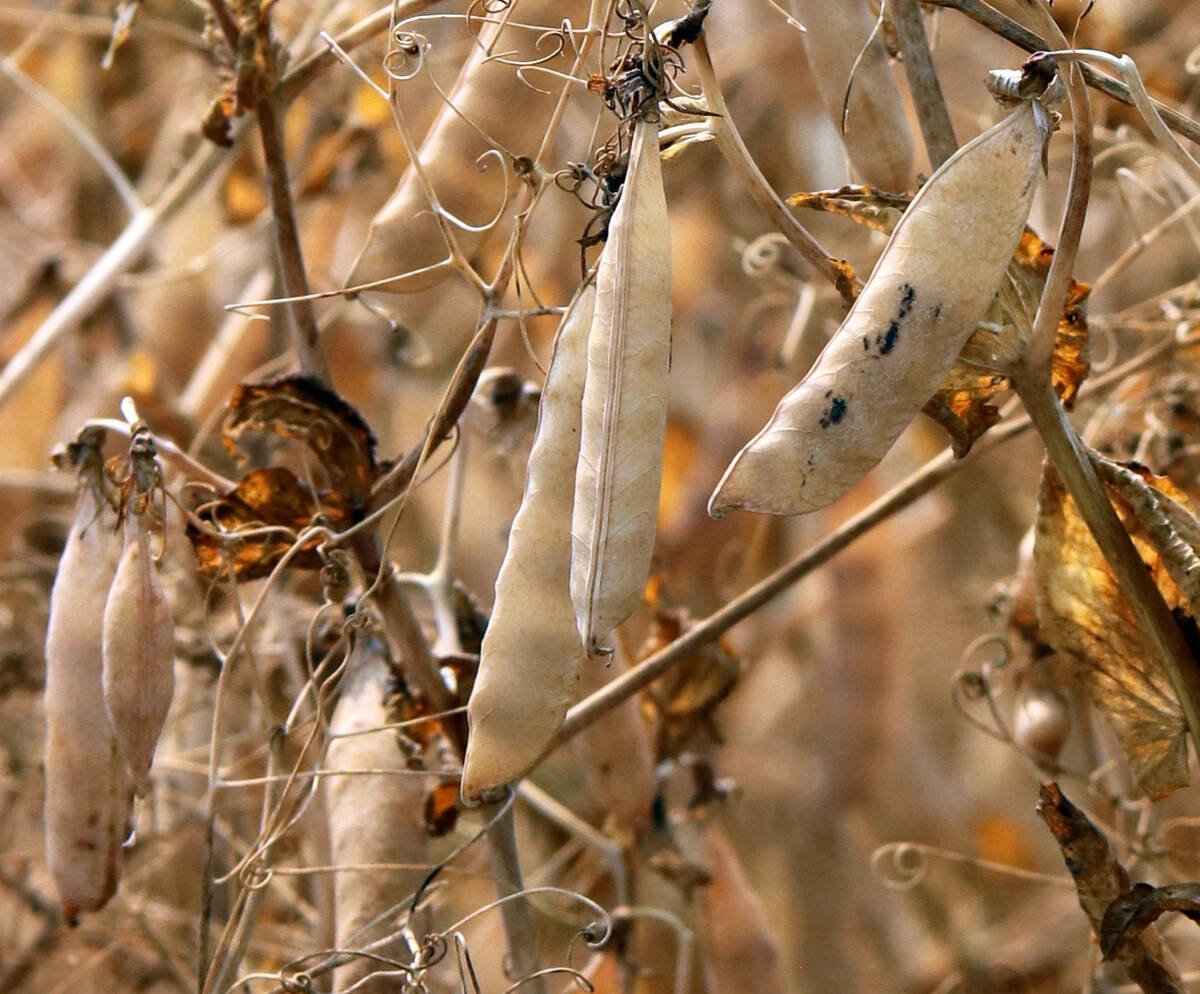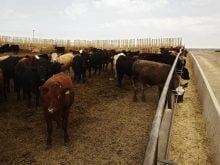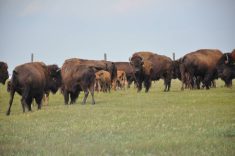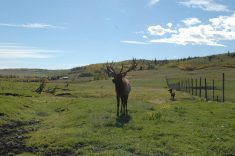BRAGG CREEK, Alta. – Pintos are horses of a different color with a special place in the hearts of many horse lovers.
Properly known as the Canadian Pinto, each Pinto is unique.
“They’re like thumbprints – no two are alike. Each is its own work of art,” said Faith Dean, president of the Canadian Pinto Horse Association.
Combining white with 10 shades of color ranging from black to palomino makes these horses stand out in a crowd.
For those who show horses, Pintos must always out-perform the rest because everyone remembers the horse with color, said Pinto breeder Jacquie Bishop of Bragg Creek.
Read Also

Trump’s tariffs take their toll on U.S. producers
U.S. farmers say Trump’s tariffs have been devastating for growers in that country.
She married into a Pinto-loving family at the Saddle and Sirloin Ranch where she and her husband Rob raise and train horses.
The original animals arrived with the Spanish conquistadors and were called “Pintado” meaning painted on. Captured by Indians, they were favored for their colors because they were naturally camouflaged.
The Canadian Pinto Horse Association began registering horses of distinct colors in 1963. There are 150 to 200 members in the association, which is based in Andrew, Alta.
A Canadian Pinto is different from the American Paint because the Canadians are registered on the basis of bloodlines rather than color.
The horses are not bred to reach a specific size since they are a multi-purpose animal.
While Pintos cross well with other breeds, the purebred herd registry book was closed in 1987 to ensure pure bloodlines.
“One of the most positive things to happen to our breed was closing our books. It’s important to our marketing,” said Faith.
There are two color patterns, tobiano and overo. Tobiano is two or three colors that cross over the topline with a solid-colored head and often, white legs. Overo is a solid body color with splashes of color on the sides. Overos often have a bald (white) face.
Black and white Pintos are the most valuable. However color can’t be predicted and some may be born without a color pattern.
“With selective breeding they’ll eventually get colored foals 90 percent of the time,” said Rob Bishop.
As breeders, the Bishops work to improve the quality, conformation and disposition of the horse.
As trainers they stress that before buying, the rider must fit the horse. If the two don’t work well together, people will find their relationship with their horse to be a disappointment.
“Throughout North America there’s a shortage of good, quality working horses,” said Rob. People want them trained, experienced and gentle.
“Everybody wants a four year old or one their grandmother can ride,” said Rob.
Faith Dean agrees that colored horses are hot these days.
“There’s more demand than there are colored horses,” said Faith.
Her father, Don Dean, has had better than average luck breeding for black and white patterns but adds a well-framed body structure and a pleasant natured animal are more important than color.
“We stress conformation over color,” said Don.















